Email Marketing Benchmark Recommends
How To Manage Your Email Campaigns for Ultimate Success
August 17, 2021 10 min read

The magic of email marketing and what it can do for your marketing strategy doesn’t happen all on its own.
While we all know that it’s important to create drip campaigns that cater to your audiences’ needs and provide them with resources that will help them navigate toward a decision, content is only one piece of the puzzle. When it comes to your email campaign management, it’s to strategize beyond the basics, optimizing not just your content but the ways that you manage your campaigns from the inside out.
To get the results you’re looking for, you’ve got to start with the foundation of your email marketing strategy. Here’s how to maintain success and facilitate appropriate campaign management so you can connect, engage, and convert.
Build Your Email List
You can’t send out email newsletters without a list of subscribers ready to receive them, but how do you gather those email addresses? There are a number of ways to capture customer data to create your email list.
Make sure that you make it as easy as possible to sign up for your email campaigns. This includes adding forms to your website that capture leads as they interact with your existing content and creating gated assets that encourage sign-ups from interested prospects.
Equally key to your email marketing campaigns is to ask the right questions when you bring on a new contact. Make sure you ask things like name, email, industry, job title, company name and size, marketing budget, and anything else that will help you segment and qualify your leads more effectively.
It’s important to remember that quality is more important than quantity. Savvy marketers know that purchasing email lists or adding people without a clear opt-in is not only ineffective from a marketing standpoint—people will just unsubscribe, and your brand’s pushiness will leave a bad taste in their mouths—but may also potentially be illegal under GDPR.
The more genuinely interested subscribers your list contains, the more effective your emails will be.
Segment Your Email Lists
Speaking of segmentation, breaking up your leads into distinct groups is crucial for efficient targeting. This means segmenting contacts based on where they are in the buyer’s journey so that you can send them content specifically geared to take them to the next step instead of just sending everything to everyone at once.
Use a marketing automation tool to automatically segment your email list for you. This ensures that the right leads are placed in the right segments and eliminates the need for guesswork when it comes to who goes where.
Optimize Your Use of Content
All content is not created equal. Go through the content you’ve created and see what would be the right fuel for your email campaigns. This will usually be content that already has a high level of engagement through downloads, views, and conversions. Decide where these pieces of content fit in the buyer’s journey, which campaigns they make the most sense for, and then fill in any leftover gaps with new content. You’ll have all your bases covered and hopefully get a lot of dual-purpose out of previous pieces you’ve already published.
Get Personal
Pairing an email marketing automation platform with a CRM will give you access to key information on your subscribers. This is crucial because having this kind of information will enable you to send personalized emails, which have much higher open rates than generic mass emails.
Putting a subscriber’s first name in the subject line can lead to open rates that are 50% higher than emails with non-personalized subject lines, and higher open rates improve deliverability, bypassing the spam folder. With results like that and with automation making personalization easy, there’s no reason not to get on a first-name basis with your customers.
Simplify Your Style
It may be tempting to play around with all the design options on offer, but your best bet for email marketing success is to keep your layouts simple and sleek. Remember, most of your email subscribers will be reading on mobile devices, and complex email design can be difficult to read on smartphones.
Your email service provider probably offers a handful of email templates—pick one that works for you and isn’t too fiddly and start there.
Keep Copy Tight
Just as you can overdesign emails, you can also overwrite them. Don’t overload your reader with a wall of text—the best email is a skimmable one, with a clear purpose and eye-catching images.
Social media has shortened all our attention spans, and we have little patience for long blocks of text. Effective emails provide similarly bite-sized copy and fun graphics, combined with a compelling reason to click through.
Make Your CTAs Clear
The point of an email is to take action, so don’t bury your CTA or make it difficult to pin down. If you want your subscribers to set up a demo, download another piece of content, or set up a call with one of your sales reps, let them know! By making the call-to-action clear as day (both in terms of copy and design), you increase the likelihood that more of your readers actually follow through.
If you’re using an email template, make sure the layout makes your CTA front and center. A good rule of thumb is to make sure your email template includes buttons or icons, which are eye-catching and can help increase your click-through rate.
Draw Readers in with Your Subject Line
In addition to addressing them personally, the key to getting subscribers to click through is to write a subject line that draws them in. Whether it’s purely transactional, like a sale announcement with a promise of a hefty percent off the list price, or more emotionally engaging, like a pop culture or musical reference, your subject line is the window to your email voice.
Try running a few subject lines through A/B testing to see which perform best, then come up with some new ways to repeat that success.
Establish a Cadence
There should be a good rhythm to your campaigns, meaning emails go out often enough to keep your brand top of mind and build trust without going out so often that your audience feels like they’re being inundated.
As you strategize, decide how often you want your emails to be sent. And from there, plan to track key conversions regularly so that you can tweak your cadence as needed. With a little bit of back and forth, you should be able to find a sweet spot that works best for both your purposes and the attention span of your readers.
Make Your CTAs Clear
The point of an email is to take action, so don’t bury your CTA or make it difficult to pin down. If you want your subscribers to set up a demo, download another piece of content, or set up a call with one of your sales reps, let them know! By making the call-to-action clear as day (both in terms of copy and design), you increase the likelihood that more of your readers actually follow through.
If you’re using an email template, make sure the layout makes your CTA front and center. A good rule of thumb is to make sure your email template includes buttons or icons, which are eye-catching and can help increase your click-through rate.
Initiate Your Campaigns and Track Results
Constant tracking is integral to email campaign success. Before you put your campaigns into motion, make sure you’ve set appropriate benchmarks for your campaigns to reach. Then, track various email marketing metrics each week to determine their progress. Examine their click-through rate, how often they are leading to sales calls, and whether or not they are being opened in the first place.
Be ready to make based on what you find. If you notice any negative patterns — such as your open rate decreasing, a lack of conversions, increased unsubscribes, or your deliverability is suffering — it’s a clear indication that something needs to change.
Steps for Developing an Email Marketing Campaign
Here’s a quick step-by-step guide for you to easily reference based on the tips above (and then some):
- Build your list with landing pages, pop-ups, and opt-in incentives.
- Define your goals for the campaign. Are you aiming for direct sales? More sign-ups? Another kind of engagement? Decide what metrics you’ll use to measure success along the way, like open rates, unsubscribes, and click-throughs.
- Plan for various types of emails and draft rough copy for all the messages you might need. Remember to include follow-up emails and abandoned cart reminders as well as scheduled sale notifications and more content-based newsletters.
- Segment your list according to demographics, buying preferences, or whatever qualifiers you prefer. Tweak your messages to target each audience with personalized content.
- Write your subject lines and remember to create a couple of options for the ones you want to A/B test.
- Implement your campaign with an email marketing platform that automates the repetitive tasks in your strategy, sending targeted messages based on where your customers are in their journey.
- Monitor your campaign’s progress, gauging each email’s success according to the metrics you defined in step two, and make any adjustments necessary along the way to keep it aligned with your overall strategy.
Examples of Great Email Marketing Campaigns
If you’re still unsure what a successful email marketing campaign looks like, here are a few of our recent favorites.
The Welcome Email: Kate Spade and Sephora
Like many brands, Kate Spade offers a discount for new email subscribers, and their welcome email focuses solely on that. The colorful image reminds customers why they love KS’s products, and the bold banner incites them to jump back to the website and spend some cash.
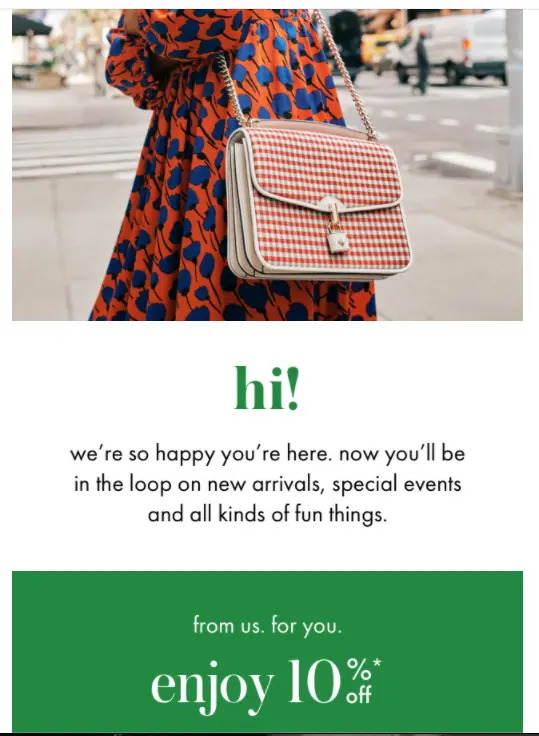
Meanwhile, Sephora has decided to forgo a financial incentive in favor of education. The below email is the first in a three-part ‘welcome’ series that introduces new customers to their brand and shows them how to get the most out of the relationship.

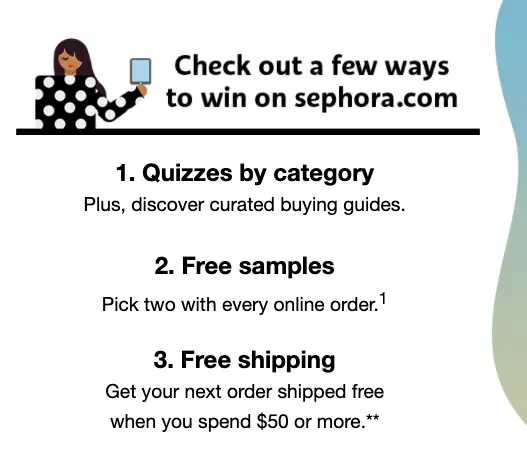
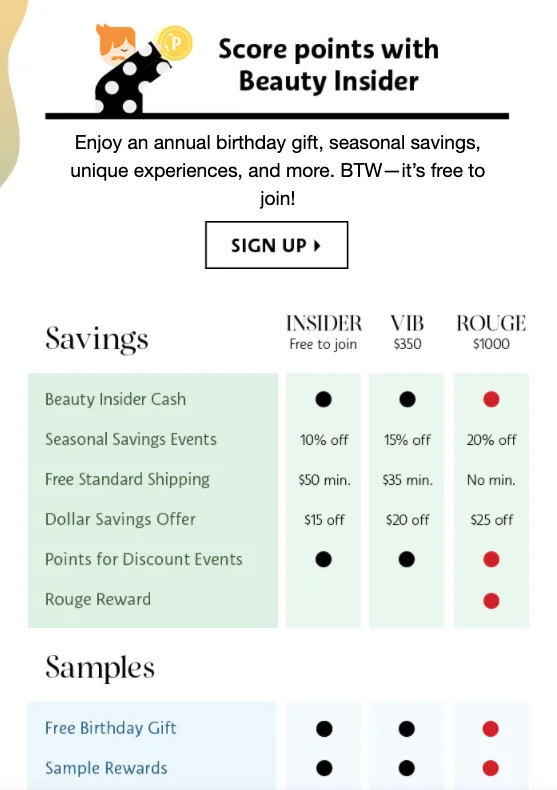
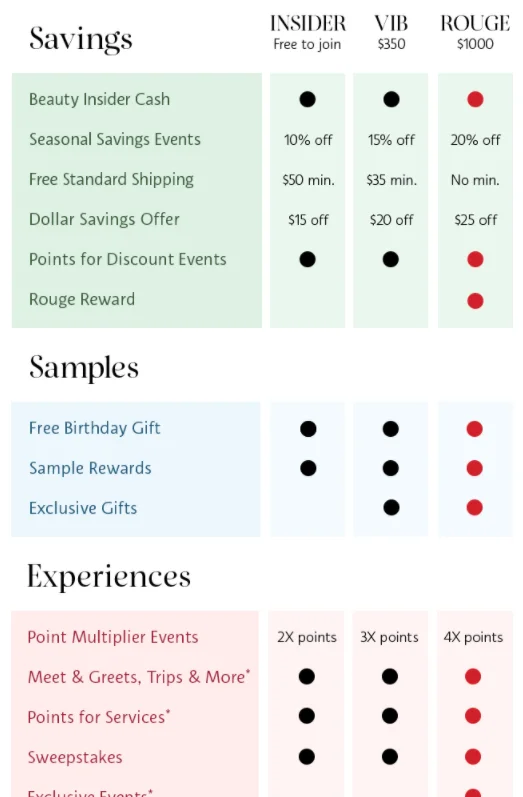
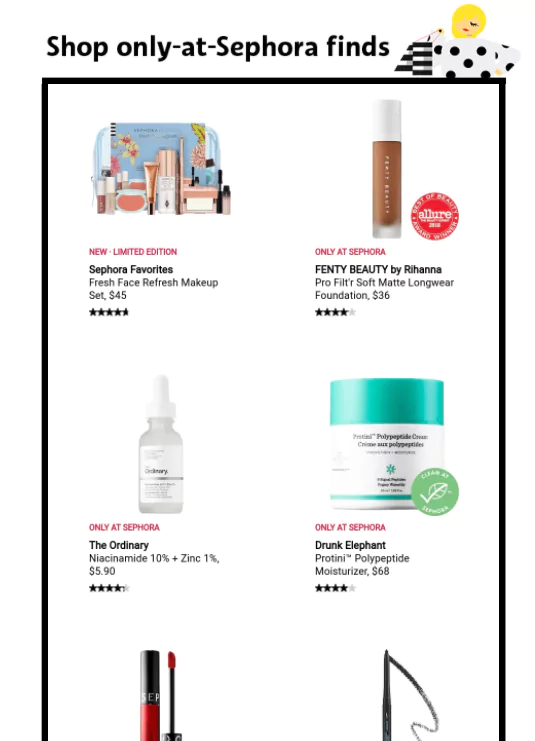

The Sale Email: Keds
Remember how we told you to keep it simple? Well, Keds does exactly that with this short and sweet promotional email. First, the subject line is conversational and urgent as it gets:

And then the body of the email is just this single, brightly-colored image with an incredibly compelling message—what’s more compelling than an extra 30% off sale items?
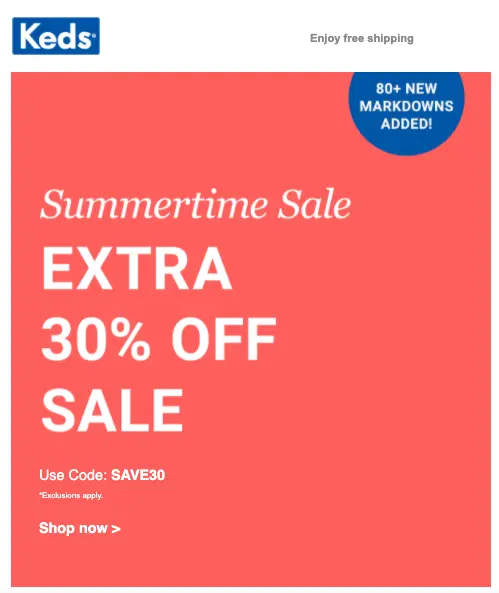
The Order Follow-up Email: THE YES
THE YES’s business model is a little different from other online shops; they act as a middleman between brands and shoppers, streamlining the ordering process and guaranteeing free returns for all of their customers while moving excess stock for the retailers. Because they’re a new kind of store, their follow-up email not only covers the order itself but is also educational and includes a CTA requesting customer reviews.
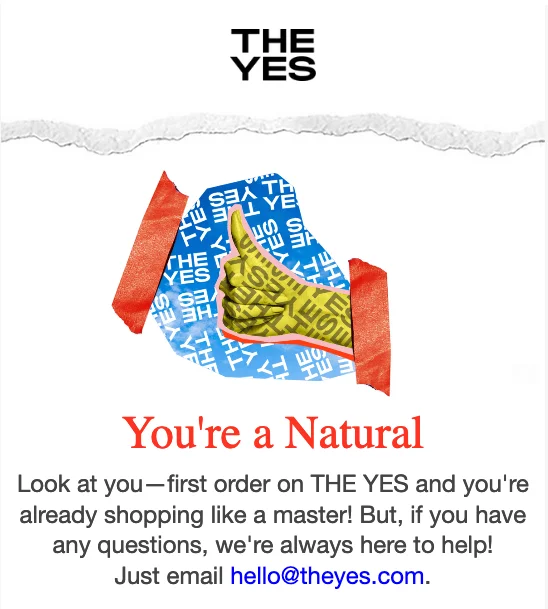

The Promotional Newsletter: Modcloth
Is Modcloth reading our minds with this subject line, or is this just an evergreen sentiment (yeah, we all know the answer to that)?

In addition to knowing our deepest desires and getting The Go-Gos stuck in our heads, the marketing team at Modcloth has curated a truly drool-worthy collection of vacation-ready pieces to get customers shopping for their dream weekend in the Bahamas.
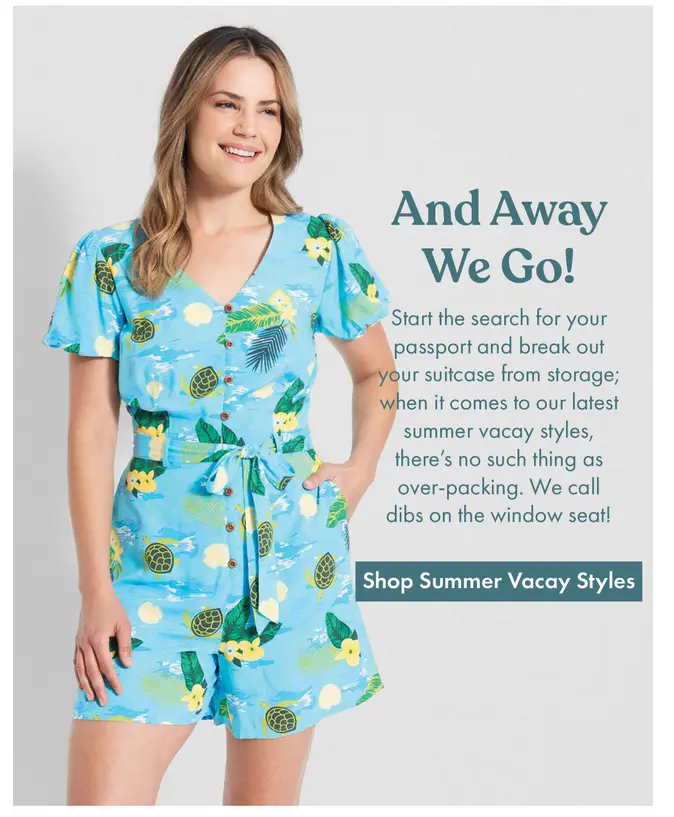

Email marketing campaigns can seem intimidating—all those messages, each with unique copy and images, and all targeted to specific audiences—but once you get the hang of them, you’ll be able to reap the rewards. You might even get to have some fun with your email marketing like these brands do!



